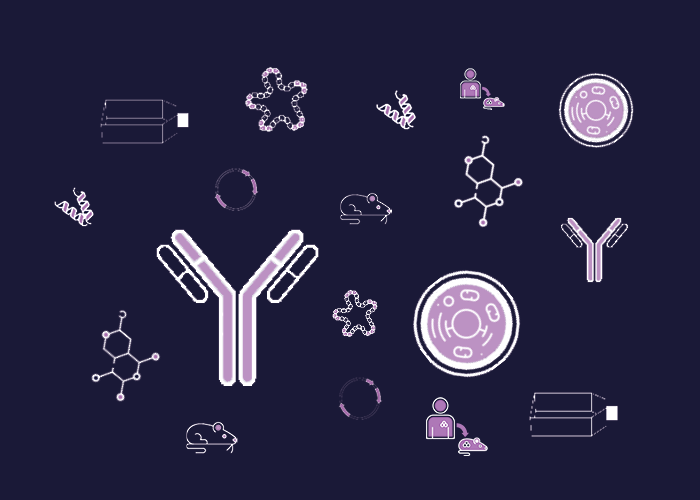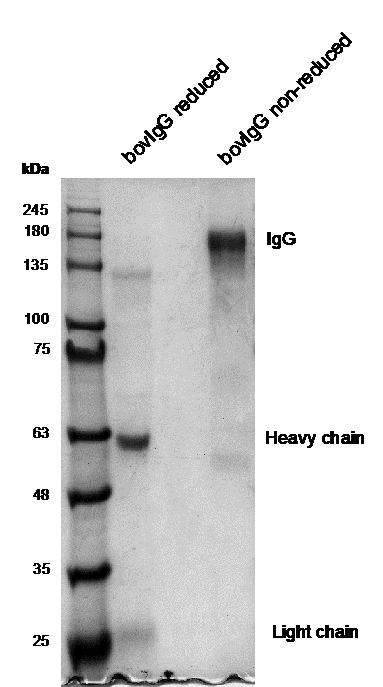Cat. #153485
Anti-A. aeolicus BPL/BioID2 [SS 3A5-E2]
Cat. #: 153485
Unit size: 100 ug
Availability: 3-5 days
Target: BPL R40G
Class: Monoclonal
Application: IF ; WB
Reactivity: Aquifex aeolicus
Host: Mouse
£300.00
This fee is applicable only for non-profit organisations. If you are a for-profit organisation or a researcher working on commercially-sponsored academic research, you will need to contact our licensing team for a commercial use license.
Contributor
Institute: A*STAR Accelerate Technologies Pte Ltd
Tool Details
*FOR RESEARCH USE ONLY (for other uses, please contact the licensing team)
- Name: Anti-A. aeolicus BPL/BioID2 [SS 3A5-E2]
- Alternate name: BPL antibody, BioID2 antibody, Anti-BPL, Anti-BioID
- Research fields: Tags and cell markers
- Clone: SS 3A5-E2
- Class: Monoclonal
- Conjugation: Unconjugated
- Molecular weight: 27 kDa
- Strain: C57BL/6
- Reactivity: Aquifex aeolicus
- Host: Mouse
- Application: IF ; WB
- Description: The SS 3A5-E2 monoclonal antibodies were generated to support the recent developments in the BioID, a method that can be used to detect potential interacting proteins . In the BioID method, a promiscuous biotin protein ligase (BPL) is fused to a protein of interests and expressed in vivo where it biotinylates proteins in a proximity-dependent manner. The biotinylated proteins can then be affinity purified and identified by mass spectrometry. The original BioID uses a promiscuous BPL from E.coli (BirA R118G), however due to its relatively large size it occasionally hindered proper targeting of the proteins it was fused to. The second generation of the BioID method is based on a BPL from hyperthermophilic bacterium Aquifex aeolicus (A. aeolicus) that was mutated within the conserved biotin binding site (R40G) causing loss of BPL single substrate specificity. The promiscuous A. aeolicus BPL R40G referred to as BioID2 is the smallest known BPL. The smaller BioID2 not only improved targeting of the bait but also proved to be more efficient in biotinylating proximate proteins.
- Immunogen: GST fused to A. aeolicus BPL R40G (BioID2)
- Isotype: IgG1 kappa
- Myeloma used: Sp2/0-Ag14
- Recommended controls: Cells overexpressing A. aeolicus BPL R40G (BioID2) construct
Target Details
- Target: BPL R40G
- Molecular weight: 27 kDa
- Target background: The SS 3A5-E2 monoclonal antibodies were generated to support the recent developments in the BioID, a method that can be used to detect potential interacting proteins . In the BioID method, a promiscuous biotin protein ligase (BPL) is fused to a protein of interests and expressed in vivo where it biotinylates proteins in a proximity-dependent manner. The biotinylated proteins can then be affinity purified and identified by mass spectrometry. The original BioID uses a promiscuous BPL from E.coli (BirA R118G), however due to its relatively large size it occasionally hindered proper targeting of the proteins it was fused to. The second generation of the BioID method is based on a BPL from hyperthermophilic bacterium Aquifex aeolicus (A. aeolicus) that was mutated within the conserved biotin binding site (R40G) causing loss of BPL single substrate specificity. The promiscuous A. aeolicus BPL R40G referred to as BioID2 is the smallest known BPL. The smaller BioID2 not only improved targeting of the bait but also proved to be more efficient in biotinylating proximate proteins.
Applications
- Application: IF ; WB
Handling
- Format: Liquid
- Concentration: 1 mg/ml
- Unit size: 100 ug
- Storage buffer: PBS with 0.02% azide
- Storage conditions: -15° C to -25° C
- Shipping conditions: Shipping at 4° C




